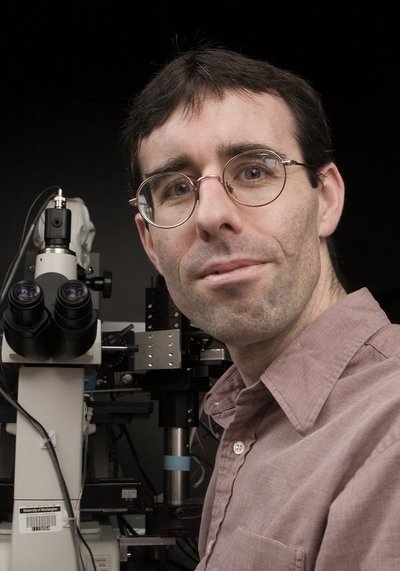February 2, 2006
Rieke to receive 2006 NAS award
The National Academy of Sciences has announced that Dr. Fred Rieke, UW associate professor of physiology and biophysics, and an investigator for the Howard Hughes Medical Institute, is one of 15 people chosen to receive a 2006 National Academy of Sciences Award for Major Contributions to Science. The awards will be presented in April during the NAS annual meeting.
Rieke and Dr. Marvin Chun of Yale University will receive Troland Research Awards, given to recognize unusual achievement and to further research in the “broad spectrum of experimental psychology.”
Rieke was chosen, according to the citation, “for experimental and theoretical analyses of information coding in the central nervous system and its relation to perception.” The Troland Awards, established with a bequest from Leonard Troland and given since 1984, include $50,000 for research.
Rieke, who also has adjunct appointments in the departments of Physics and Ophthalmology, is working to understand in precise detail how the visual system works, and particularly how visual signals are received and processed by the retina of the eye.
“One focus of our work has been to understand how vision works at very low light levels,” he noted. “The human eye works better than any camera to receive signals in low light, and to create an image from those signals.
“To take a fresh look at questions about the visual system, we’ve asked: How has biology solved the problem of vision? In other words, if you went to the biological hardware store, what parts would you need to buy to make this system work and how would you put them together?”
Along with identifying the “parts,” he noted, the work involves trying to understand how the neural circuitry within the retina is configured to send appropriate signals to the brain, beginning when a single photon is received by a single rod cell.
Rieke and his colleagues have combined theory and experimental approaches to get at the answers, one feature of the research that has attracted national attention. Among other experimental approaches, they have developed techniques to record and compare signals from each of five classes of cells in the retina.
He is a graduate of the University of California at Berkeley and earned his Ph.D. in physics there in 1991. He was a postdoctoral fellow at the University of Chicago and Stanford University’s Department of Neurobiology before joining the UW School of Medicine faculty in 1997.
He has received several other awards, including a McKnight Scholar Award, and was named an investigator for the Howard Hughes Medical Institute last year.



